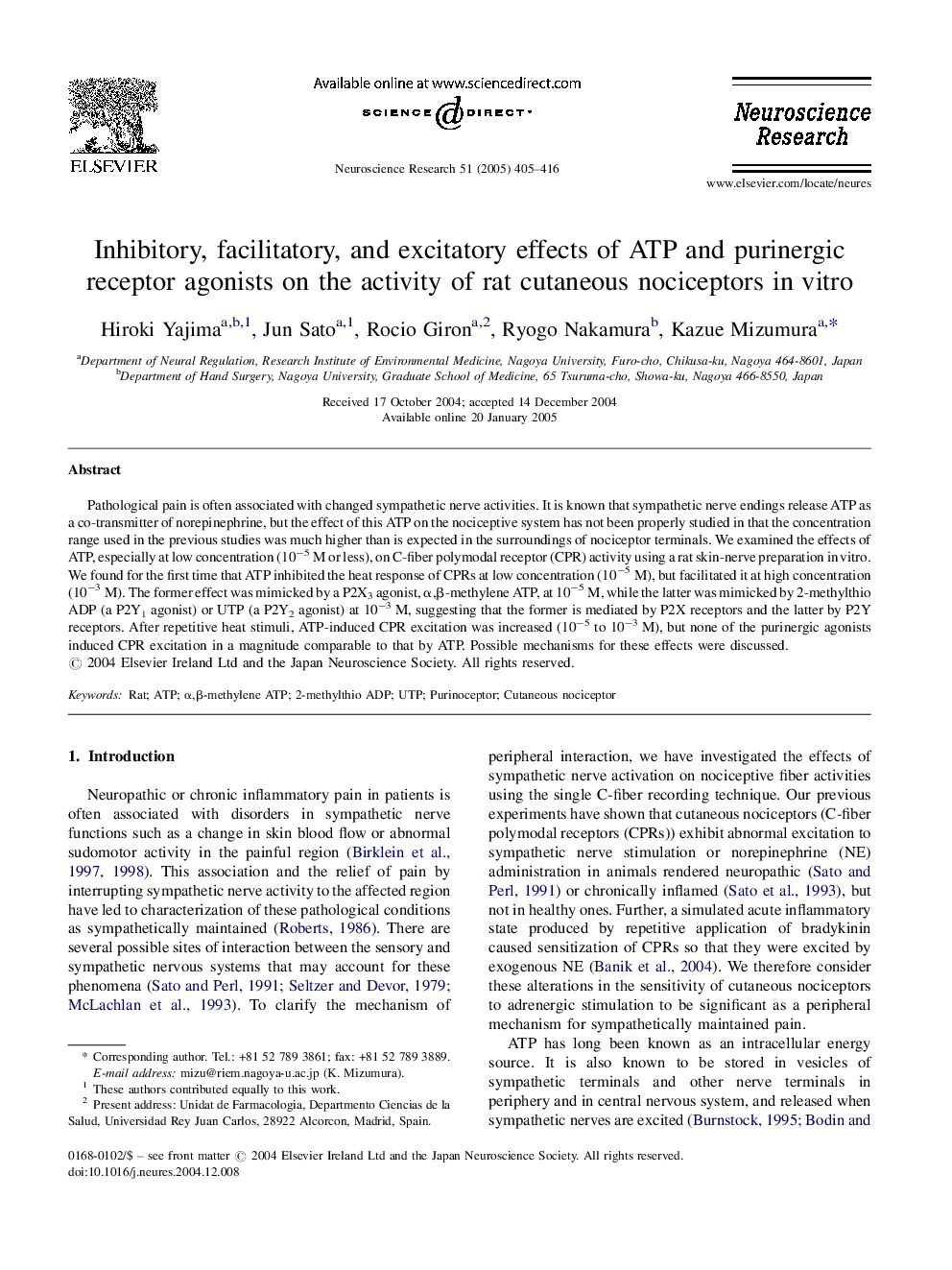| Article ID | Journal | Published Year | Pages | File Type |
|---|---|---|---|---|
| 9434941 | Neuroscience Research | 2005 | 12 Pages |
Abstract
Pathological pain is often associated with changed sympathetic nerve activities. It is known that sympathetic nerve endings release ATP as a co-transmitter of norepinephrine, but the effect of this ATP on the nociceptive system has not been properly studied in that the concentration range used in the previous studies was much higher than is expected in the surroundings of nociceptor terminals. We examined the effects of ATP, especially at low concentration (10â5 M or less), on C-fiber polymodal receptor (CPR) activity using a rat skin-nerve preparation in vitro. We found for the first time that ATP inhibited the heat response of CPRs at low concentration (10â5 M), but facilitated it at high concentration (10â3 M). The former effect was mimicked by a P2X3 agonist, α,β-methylene ATP, at 10â5 M, while the latter was mimicked by 2-methylthio ADP (a P2Y1 agonist) or UTP (a P2Y2 agonist) at 10â3 M, suggesting that the former is mediated by P2X receptors and the latter by P2Y receptors. After repetitive heat stimuli, ATP-induced CPR excitation was increased (10â5 to 10â3 M), but none of the purinergic agonists induced CPR excitation in a magnitude comparable to that by ATP. Possible mechanisms for these effects were discussed.
Related Topics
Life Sciences
Neuroscience
Neuroscience (General)
Authors
Hiroki Yajima, Jun Sato, Rocio Giron, Ryogo Nakamura, Kazue Mizumura,
